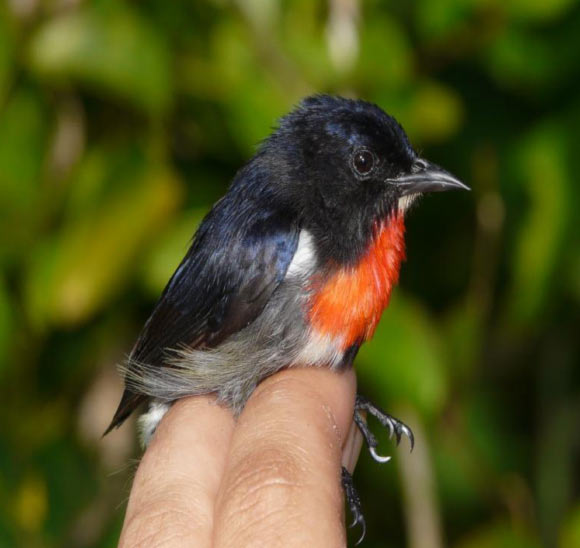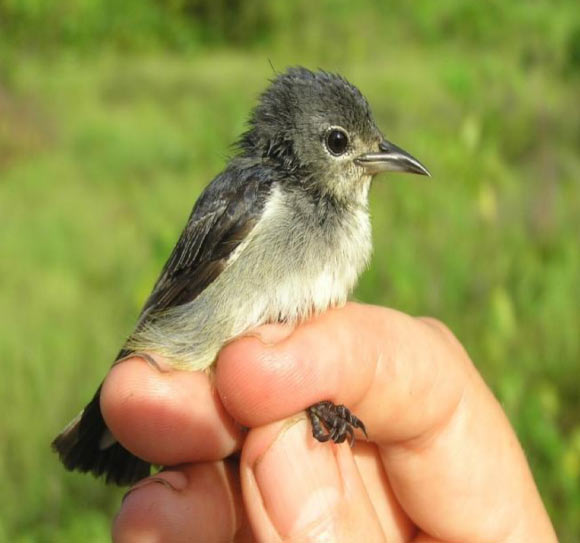A group of ornithologists from Trinity College Dublin, Ireland, has described a new species of flowerpecker from the Wakatobi Islands of Indonesia, off the coast of Sulawesi.
The Sulawesi region is part of Wallacea, a biodiversity hotspot named after a famous British explorer and co-founder of the theory of evolution by natural selection, Alfred Russel Wallace.
Despite boasting an incredibly large number of bird species that are found nowhere else in the world, the region has remained poorly studied.
A new bird species from Sulawesi belongs to Dicaeum, a genus in the flowerpecker family Dicaeidae.
Dicaeum flowerpeckers are small (10 to 18 cm long), often colorful birds. They have short tails, short thick curved bills and tubular tongues.
During the months of July, August and September in various years between 1999 and 2012, Dr Nicola Marples of Trinity College and his colleagues sampled individuals of a previously recognized Dicaeum species – the Grey-sided flowerpecker (Dicaeum celebicum) – from seven sites across the Wakatobi archipelago, Buton Island and the south-eastern peninsula of Sulawesi. In total, 58 flowerpeckers were mist-netted and studied.
The combined results from genetic, phylogenetic and morphological analyses indicated that flowerpeckers from a small chain of islands known as the Wakatobi Islands are a new species, named the Wakatobi flowerpecker (Dicaeum kuehni).
The genetic data also revealed that the Grey-sided flowerpecker and the Wakatobi flowerpecker did not mix or interbreed, which in turn suggests that they do not cross the 27 km stretch of ocean between them.
“The identification of a species that is confined entirely to the Wakatobi Islands will require conservation organizations such as BirdLife International to reassess the protection status afforded to these islands,” said Dr Marples, who is the senior author of a paper published in the open-access journal PLoS ONE.
“While the islands sit within the Wakatobi Marine National Park, they currently receive no protection. The Wakatobi Islands are an incredibly exciting place to work and they serve as a unique living laboratory in which we can study evolution in action.”
______
Kelly SBA et al. 2014. Molecular and Phenotypic Data Support the Recognition of the Wakatobi Flowerpecker (Dicaeum kuehni) from the Unique and Understudied Sulawesi Region. PLoS ONE 9 (6): e98694; doi: 10.1371/journal.pone.0098694









